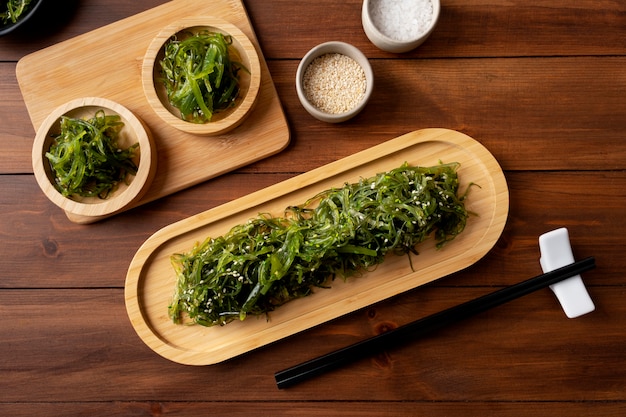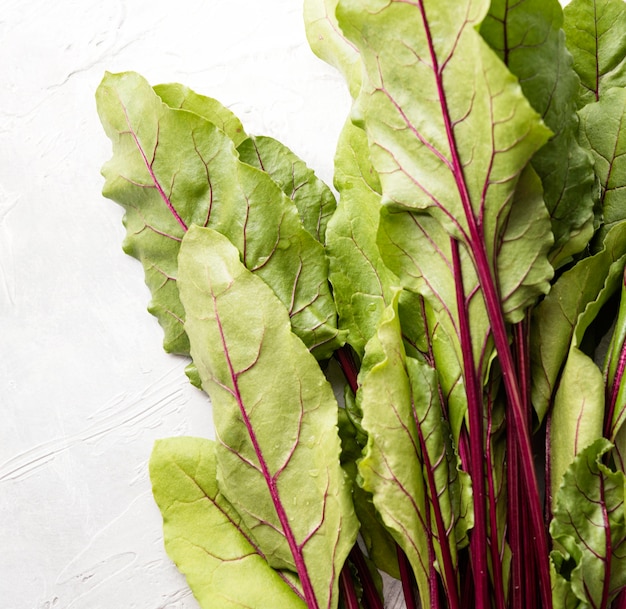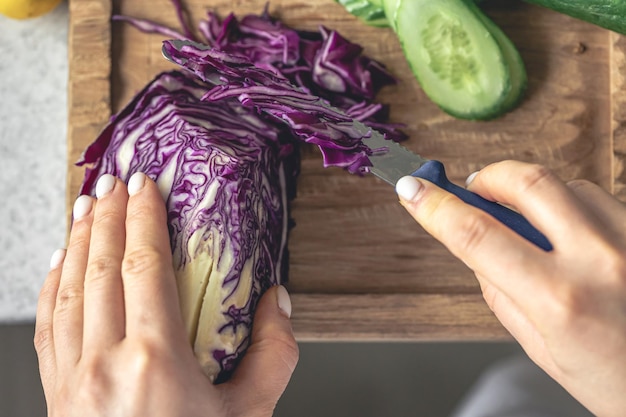Right, let's talk about Swiss chard. This leafy green has been a constant in my kitchen for years, and I honestly can't imagine cooking without it. It's so versatile! You can throw it into anything from salads and soups to stir-fries, and even desserts (yes, you read that right!). But I know for some, chard might seem a little intimidating. It can look a bit, well, strange, and you might not be sure what to do with it. So, I'm here to tell you: don't be scared! Chard is actually super easy to cook, and it's absolutely packed with flavour and nutrients.
I've got a whole load of recipes up my sleeve, from classic to more adventurous. I'll walk you through the basics of preparing chard, and then we'll dive into some seriously delicious recipes, from simple sides to hearty main courses. And hey, we'll even tackle those chard stems – no waste here! By the time you're done reading, you'll be a chard-cooking pro, I promise.
(Part 1) What is Swiss Chard?

Let's get the basics out of the way. Swiss chard, for those of you who haven't met it, is a leafy green vegetable belonging to the same family as beets. You know, those beetroot burgers you love? Well, Swiss chard is its cousin. It's got these beautiful dark green leaves that look like giant spinach, and then you've got the thick, white stalks – that's where the "Swiss" part comes in. They're not just for show; they have a delightful, slightly sweet flavour that adds a whole other dimension to your dishes.
(Part 2) nutritional powerhouse

Now, this is where chard really shines. This little green is a nutritional powerhouse! It's absolutely jam-packed with vitamins, minerals, and antioxidants. Let's just say it's like a superfood in disguise, and you don't even have to pay a fortune for it!
- Vitamins galore: Chard is absolutely bursting with vitamin K, vitamin A, vitamin C, and folate. These are all crucial for healthy bones, vision, skin, and immunity.
- Mineral-rich: This leafy green also boasts a good dose of magnesium, potassium, iron, and calcium. These minerals are vital for regulating blood pressure, muscle function, and overall health.
- Antioxidant goodness: Chard is loaded with antioxidants, which fight those nasty free radicals that can damage cells and contribute to aging.
Plus, it's super low in calories and fat, making it a guilt-free addition to any diet.
(Part 3) The Beauty of Swiss Chard

Ok, I'm a bit of a chard enthusiast, and I'm not just saying that because it's healthy. Here's why I love it:
- Versatility: As I said, chard is super versatile. It can be cooked in countless ways, and it pairs beautifully with so many different flavours. It's like a blank canvas for your culinary creativity!
- budget-friendly: Chard is usually one of the most affordable greens you'll find in the supermarket. So, it's a fantastic way to add some nutritional punch to your meals without breaking the bank.
- Long shelf life: Chard can last for days (even a week!) in the fridge, which makes it a great option for meal prepping or those busy weeknights.
(Part 4) Preparing Swiss Chard
Now, let's get practical. Here's how to prep your chard like a pro:
- Wash thoroughly: First, give those leaves a good rinse. They can get a bit dusty in the supermarket.
- Separate the leaves from the stems: This is the only slightly tricky part, but it's easy once you get the hang of it. Just grab the base of the stem and pull the leaves away.
- Chop the stems: You can chop the stems into smaller pieces, which are perfect for soups or stews. You can also use a vegetable peeler to remove the tougher outer layer of the stem for a more tender result.
- Chop the leaves: You can chop the leaves coarsely or finely, depending on your recipe. If you're using them in a salad, a rough chop is perfect. For stir-fries or soups, a finer chop works better.
And there you have it! Now you're ready to cook.
(Part 5) Classic Steamed Chard
Let's start with a classic. Steamed chard is super simple, quick, and a perfect way to showcase its natural flavour. Here's what you'll need:
- 1 bunch Swiss chard, washed and prepared
- Salt and pepper, to taste
- Optional: A squeeze of lemon juice
Method:
1. Bring a large pot of salted water to a rolling boil.
2. Add the chard to the boiling water and cook for 2-3 minutes, or until the leaves are tender but still bright green. Overcooking will result in a mushy, less appealing texture.
3. Drain the chard in a colander.
4. Season with salt and pepper, and squeeze a bit of lemon juice over it, if you like. This adds a bright touch and balances any potential bitterness.
And that's it! You've got yourself a healthy and delicious side dish that goes perfectly with any main course.
(Part 6) Sautéed Chard with Garlic and Lemon
Here's a super flavourful way to cook chard, using some simple pantry ingredients.
- 1 bunch Swiss chard, washed and prepared
- 2 cloves garlic, minced
- 1 tablespoon olive oil
- Salt and pepper, to taste
- Juice of half a lemon
Method:
1. Heat the olive oil in a large skillet or frying pan over medium heat.
2. Add the garlic and cook for about 30 seconds, until fragrant.
3. Add the chard leaves and stems to the pan and cook, stirring frequently, for about 5 minutes, or until wilted and tender. Don't be afraid to add a bit more olive oil if needed.
4. Season with salt and pepper, and stir in the lemon juice.
5. Serve hot, as a side dish or as part of a main course. This simple dish is absolutely delicious served alongside grilled fish or chicken.
(Part 7) Chard and potato gratin
This is a hearty and comforting dish that's perfect for a cold evening. It's a bit more involved than the previous recipes, but the result is well worth the effort.
- 1 bunch Swiss chard, washed and prepared
- 4 large potatoes, peeled and thinly sliced
- 1 onion, thinly sliced
- 1/2 cup grated cheese (Gruyere or cheddar works well)
- 1/2 cup milk
- 1/4 cup chicken or vegetable broth
- 2 tablespoons butter
- Salt and pepper, to taste
- Fresh nutmeg (optional)
Method:
1. Preheat your oven to 180°C (350°F).
2. In a large saucepan, bring the milk, broth, and butter to a simmer.
3. Add the potato slices and cook for 10 minutes, or until they're slightly tender.
4. Remove the potatoes from the pan and set them aside.
5. Add the chard to the pan and cook for 5 minutes, or until wilted.
6. Add the onion and cook for another 3 minutes, or until softened.
7. Return the potatoes to the pan, and stir everything together.
8. Season with salt, pepper, and a pinch of nutmeg, if you like. The nutmeg adds a lovely warmth to the dish.
9. Transfer the mixture to a baking dish.
10. Sprinkle the cheese on top.
11. Bake for 20-25 minutes, or until the cheese is melted and golden brown.
(Part 8) Chard and chickpea curry
For a flavourful vegetarian main course, try this delicious chard and chickpea curry. This is a great way to use up leftover cooked chickpeas or, if you're feeling ambitious, you can even make your own.
- 1 bunch Swiss chard, washed and prepared
- 1 can (400g) chickpeas, drained and rinsed
- 1 onion, chopped
- 2 cloves garlic, minced
- 1 inch fresh ginger, grated
- 1 teaspoon ground cumin
- 1 teaspoon ground coriander
- 1/2 teaspoon turmeric
- 1/4 teaspoon cayenne pepper (optional)
- 1/2 cup chopped tomatoes
- 1/2 cup vegetable broth
- Salt and pepper, to taste
- Fresh cilantro (coriander), chopped (for garnish)
Method:
1. Heat a tablespoon of oil in a large pot or dutch oven over medium heat.
2. Add the onion, garlic, and ginger and cook for about 5 minutes, until softened.
3. Stir in the cumin, coriander, turmeric, and cayenne pepper (if using) and cook for 1 minute, until fragrant.
4. Add the chopped tomatoes and cook for 5 minutes, until they've broken down slightly.
5. Add the chickpeas, vegetable broth, and salt and pepper.
6. Bring the mixture to a boil, then reduce heat and simmer for 15 minutes, or until the chickpeas are tender.
7. Add the chard leaves and stems to the pot, and cook for another 5 minutes, or until the leaves are wilted.
8. Garnish with chopped cilantro before serving. This curry is best served with rice or naan bread.
(Part 9) Sweet and Savoury Chard Tart
Now, for something a bit different. This tart combines the sweetness of chard with the savoury notes of cheese and herbs. It's a beautiful dish to serve at a dinner party or potluck.
- 1 sheet puff pastry, thawed
- 1 bunch Swiss chard, washed and prepared
- 1/2 cup grated cheese ( Gruyere or cheddar works well)
- 1/4 cup chopped walnuts
- 2 eggs
- 1/2 cup milk
- Salt and pepper, to taste
- Fresh thyme (optional)
Method:
1. Preheat your oven to 180°C (350°F).
2. Roll out the puff pastry on a lightly floured surface and line a tart pan.
3. Prick the bottom of the pastry with a fork. This will help prevent bubbles from forming during baking.
4. Bake the pastry for 10 minutes, or until it's slightly golden.
5. Remove the pastry from the oven and let it cool slightly.
6. In a large bowl, whisk together the eggs, milk, salt, and pepper.
7. Add the chard, cheese, walnuts, and thyme (if using) to the bowl and mix well.
8. Pour the mixture into the pre-baked pastry shell.
9. Bake for 20-25 minutes, or until the filling is set and the top is golden brown.
(Part 10) Chard Stems: Don't Throw Them Away!
I know, I know, the stems can look a bit intimidating, but don't toss them out! They're packed with flavour and nutrients too. Here are a few ways to use them:
- Sauté them: Simply sauté the chopped stems with garlic and olive oil until tender. They make a fantastic side dish, or you can add them to soups or stews.
- Roast them: Roast the stems with a drizzle of olive oil, salt, and pepper until tender and caramelized. This brings out their sweetness and makes for a delicious side or topping for a dish.
- Blend them: You can add the stems to smoothies or soups, where they'll blend right in and add a boost of nutrients.
(Part 11) Swiss Chard in Different Cuisines
Chard is a global star! It's a beloved ingredient in many different cuisines:
- Italian: In Italy, chard is often used in pasta dishes, like ravioli and tortellini.
- Greek: In Greece, chard is used in a variety of dishes, from stews to pies.
- Middle Eastern: In the Middle East, chard is used in soups and stews, often with lemon and chickpeas.
- Asian: In Asia, chard is used in stir-fries and soups.
(Part 12) Finding the Perfect Swiss Chard
Now, let's talk about choosing the right chard. Here's what to look for:
- Freshness: Look for chard with bright green leaves that are crisp and free of wilting or yellowing.
- Stems: Choose stems that are firm and white, not limp or brown.
- Size: The size of the leaves doesn't really matter, but make sure the leaves aren't too large or too small.
(Part 13) Storing Swiss Chard
To keep your chard fresh, store it in the fridge for up to a week:
- Wrap it up: Wrap the chard leaves in paper towels or a clean tea towel. This helps absorb excess moisture and prevents the leaves from wilting.
- Place in a plastic bag: Place the wrapped chard in a plastic bag and seal it tightly.
- Store in the fridge: Store the bag of chard in the crisper drawer of your fridge.
(Part 14) FAQs
Got some burning questions? Here are some answers to common queries about Swiss chard:
Q1. Is Swiss chard bitter?
Well, it can be, depending on how you cook it. Overcooked chard can develop a slightly bitter taste. The key is to cook it just until it's tender but still bright green.
Q2. How do you get the bitterness out of Swiss chard?
The best way to minimise bitterness is to cook chard quickly and over medium heat. You can also add a touch of sweetness to balance the bitterness by adding a pinch of sugar or a squeeze of lemon juice.
Q3. Can you eat the stems of Swiss chard raw?
Honestly, they're a bit tough to eat raw. It's best to cook them! But you can try grating the stems for a salad if you're feeling adventurous.
Q4. How do you know when Swiss chard is cooked?
Cooked chard should be tender but still have a bright green colour. The leaves should wilt down, and the stems should be easily pierced with a fork.
Q5. What are some other ways to use Swiss chard?
Chard can be used in so many ways! Here are a few more ideas:
- Soup: Add chopped chard leaves and stems to your favourite soup recipe for extra flavour and nutrients.
- pasta sauce: Sauté chard with garlic and tomatoes and use it as a base for your pasta sauce.
- Quiche: Add chard to your quiche recipe for a healthy and flavourful twist.
- Pizza topping: Use chard as a topping for your pizza, along with other vegetables and cheese.
- stuffed peppers: Use chard as a filling for stuffed peppers along with rice, quinoa, or other grains.
- Frittatas: Add chard to your frittatas for a nutrient-packed breakfast or brunch.
There you have it! You're ready to become a chard cooking master! Remember, it's all about trying new things and finding what you love. So, get those leafy greens in your kitchen and start experimenting. Who knows what culinary masterpieces you might create!
Everyone is watching

How to Cook Frozen Lobster Tails Perfectly: A Step-by-Step Guide
RecipesLobster. Just the word conjures up images of lavish meals, special occasions, and a taste of luxury. But let's...

Pork Fillet Cooking Time: How Long to Cook It Perfectly
RecipesPork fillet, or tenderloin as it's sometimes called, is a real favourite in our house. It's so versatile, and...

Pigs in a Blanket Cooking Time: How Long to Bake for Perfect Results
RecipesAh, pigs in a blanket. Just the name conjures up images of those delightful little parcels of crispy pastry en...

The Ultimate Guide to Cooking Delicious Frankfurters
RecipesLet's face it, we all love a good frankfurter. It's a classic, simple, and always satisfying. But let's be rea...

Wolf Meat Recipes: A Guide to Cooking Wild Game
RecipesLet's be honest, you don't see wolf meat at your local butcher shop every day. It's a bit of a wild card, but ...
